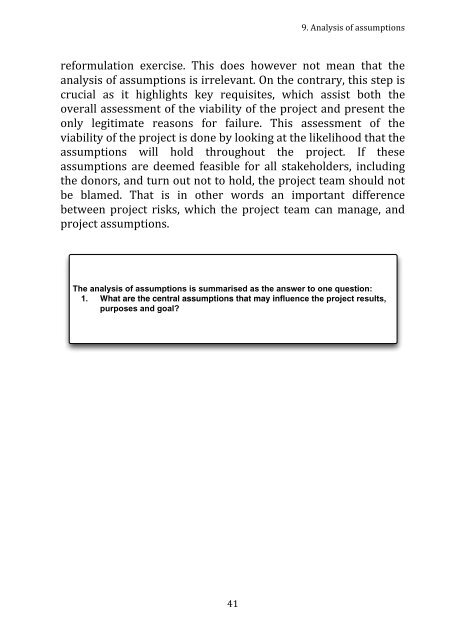Designing Capacity Development for Disaster Risk Management : A ...
Designing Capacity Development for Disaster Risk Management : A ...
Designing Capacity Development for Disaster Risk Management : A ...
Create successful ePaper yourself
Turn your PDF publications into a flip-book with our unique Google optimized e-Paper software.
9. Analysis of assumptions<br />
re<strong>for</strong>mulation exercise. This does however not mean that the <br />
analysis of assumptions is irrelevant. On the contrary, this step is <br />
crucial as it highlights key requisites, which assist both the <br />
overall assessment of the viability of the project and present the <br />
only legitimate reasons <strong>for</strong> failure. This assessment of the <br />
viability of the project is done by looking at the likelihood that the <br />
assumptions will hold throughout the project. If these <br />
assumptions are deemed feasible <strong>for</strong> all stakeholders, including <br />
the donors, and turn out not to hold, the project team should not <br />
be blamed. That is in other words an important difference <br />
between project risks, which the project team can manage, and <br />
project assumptions. <br />
The analysis of assumptions is summarised as the answer to one question:<br />
1. What are the central assumptions that may influence the project results,<br />
purposes and goal?<br />
41
















